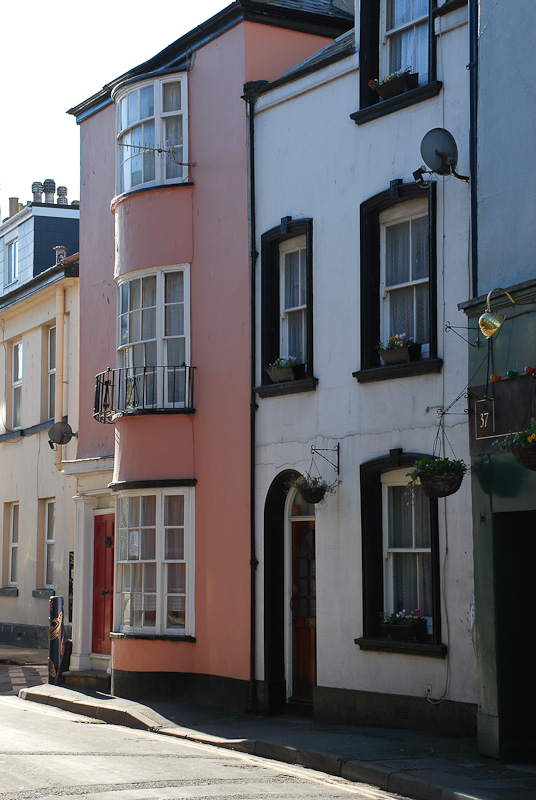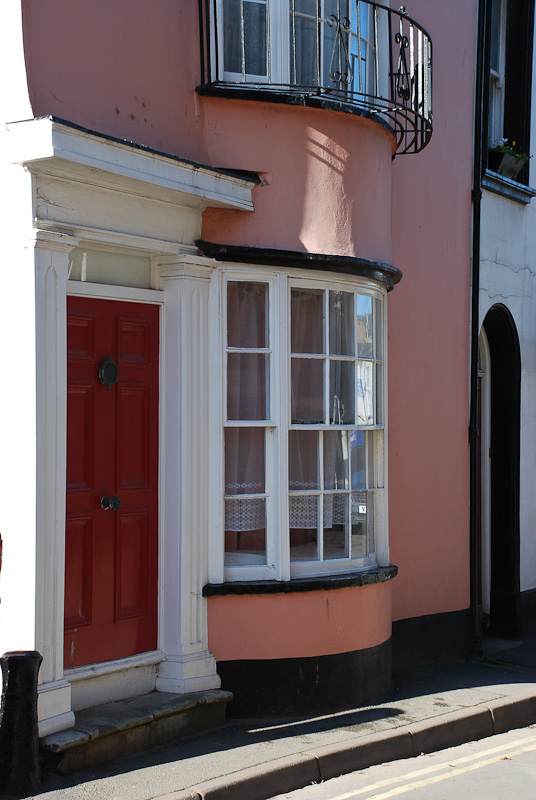Following my first trip to Teignmouth in search of the house where Keats lodged in the spring of 1818 (see Keats at Teignmouth), I contacted the local museum to find out more about his stay. Although they were in temporary premises at the time (they’re now installed in the new Teign Heritage Centre) the staff were very helpful and I spent a happy morning browsing through their files. I was surprised to discover from the various notes and cuttings that the decision to award the plaque to the present ‘Keats House’ was not unanimous and that many people considered it to have been the wrong choice. According to an article in the Teignmouth & Dawlish News dated July 6th, 1934, Harry Buxton Forman, the editor of both Keats and Shelley and a one-time resident of Teignmouth, concluded after studying Keats’ letters that he almost certainly stayed at 35 Northumberland Place, ‘at the corner of Queen Street, a turning towards the river’.
In a 1901 guide to the town, Beatrix Cresswell, a local historian describes how, ‘then as now, there was a shop close by and the pretty milliners who kept it seemed to have no small attraction to the young gentleman, as yet ‘to fortune and fame unknown’ who was busy revising and finishing his Endymion, begun the year previously in the Isle of Wight, but which was issued from Teignmouth, the author’s preface bearing the date, Teignmouth, April 10th, 1818.’
The local Council, however, decided to ignore all of the above and instead ‘consulted the Curator of Keats House, Hampstead, London’, who, for reasons unknown, gave his verdict in favour of 20 Northumberland Place, ‘where the tablet was accordingly fixed.’
Obviously, it would be have been nice to have had some certainty on the matter, not least because the poet, Wilfred Owen, who developed a ‘crush’ on Keats after purchasing a copy of Sidney Colvin’s biography of the poet, came to Teignmouth in April 1911 in search of his lodgings. In Wilfred Owen: A New Biography, Dominic Hibberd conjures an appealing impression of this first visit, which took place while Owen was staying with relatives in nearby Torquay: ‘When he found that Keats had stayed at Teignmouth not far away, he wrote home for a railway pass and was soon standing transfixed outside the house, the bewildered occupants peering at him through the window. He walked to the end of the beach where the Teign flows into the sea, noticing how the river’s current momentarily checked the incoming waves, and he thought that with a bit of ingenuity the image could be worked into a sonnet about Keats resisting death, ‘like a new dating on his doom’ (a phrase borrowed from The Fall of Hyperion). (Hibberd, p. 55)
Owen made another pilgrimage in March 1913 and the extent of his devotion to Keats is made plain in a letter to his mother quoted by Hibberd: ‘I fear domestic criticism when I am in love with a real live woman. What now when I am in love with a youth, and a dead ‘un!’
Text and photos © Angela Williams 2010, 2011
LINKS

